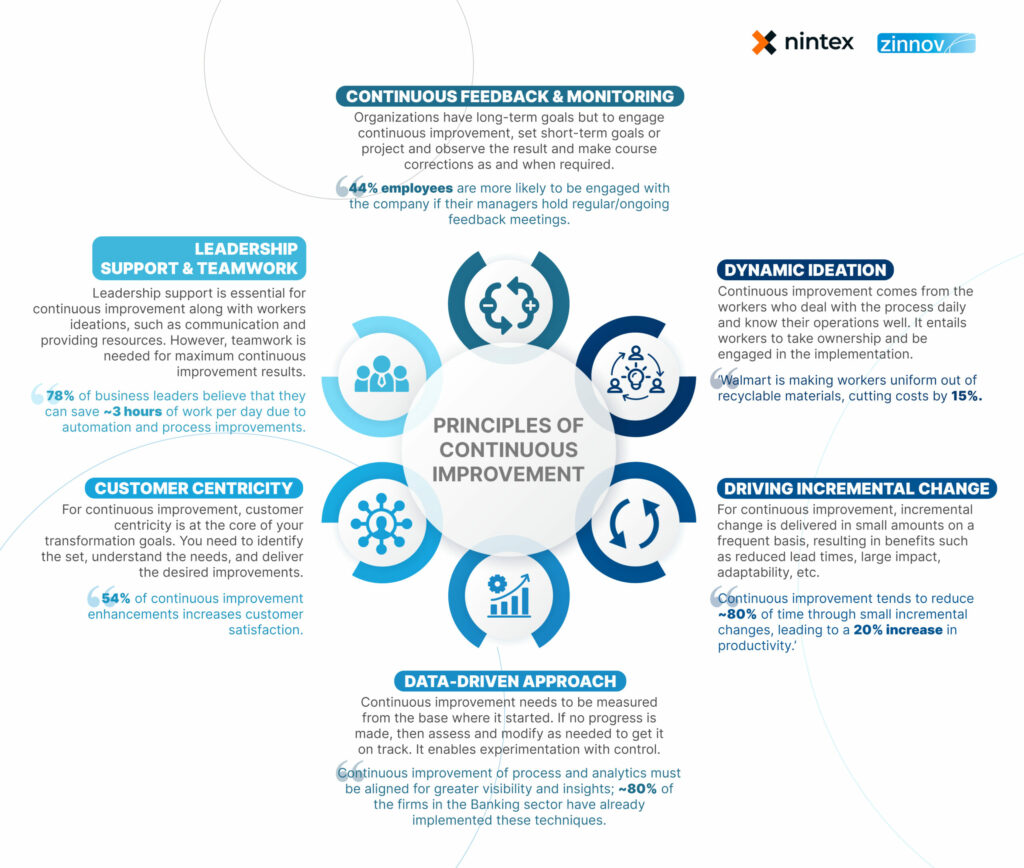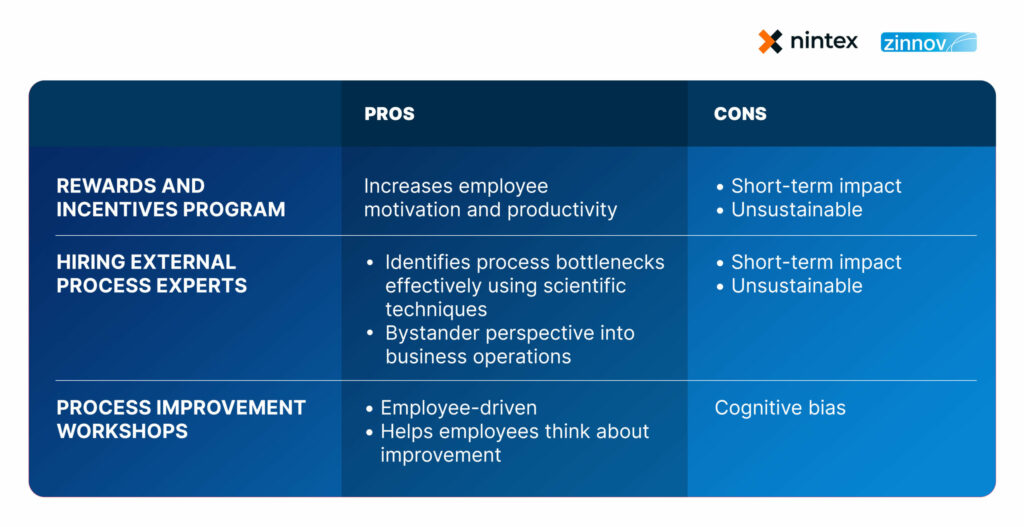|
|
A couple of years ago, the Japanese concept of Kaizen was further made popular by Amazon. The company claimed that their Kaizen program organized associates into small teams, which could help them identify areas for improvement. This was supposed to give them the opportunity to improve their working environment and streamline processes – which ultimately resulted in a better customer experience.
Today’s business landscape is a dynamic, hyper-competitive, and an unforgiving one. Businesses with an agile mindset and a commitment to continuous improvement will stand out from the competition.
Amazon’s Kaizen program is a great example of the culture of continuous improvement within teams – which enterprises have found is one of the most important factors that can help them stay relevant. This brings us to – what is continuous improvement?
Imagine an organizational culture where you are constantly encouraged to make small but definitive progress everyday with all your processes, services, and products. When an organization adopts this philosophy to be better than it was yesterday, we say it has adopted continuous learning. This culture does not discriminate based on type of industry and size of business. It helps identify opportunities for work process enhancements while reducing wastages.
This intention, combined with Process Intelligence helps in understanding processes across enterprise systems, providing accurate visibility into the current state and identify process bottlenecks.
Today, many enterprises view Process Intelligence as a one-time investment. However, the value of improvements can become exponential by deploying real-time Process Intelligence at scale within an enterprise.
But before diving into ‘why continuous improvement’, let us look at what a culture of continuous improvement can look like within an organization.

Usually, organizations that are striving to embrace a culture of continuous improvement into their company DNA are already at a competitive advantage as compared to their counterparts. It helps enterprises navigate uncertain business landscapes, build business resilience, and create sustainable business practices for the longer run.
Businesses may create a culture of positive change by encouraging innovation, and instilling ownership values among employees by involving business teams and providing them with the right resources & tools.
Enterprises today are deploying various approaches to build a culture of continuous improvement, but can’t achieve the desired results. Here’s why the following popular methods do not work as companies expect them to

The major problem with the above approaches is that they are archaic and are not dynamic enough to address the constant changes in the business environment to bring about a sustainable long-term cultural shift. When processes are improved in a typical company setting, the changes become the norm, which in turn fosters the growth of a culture-at least until something goes wrong.
Hence, continuous improvement should be on each warp and weft on the fabric of the entire organization. Only then can it facilitate growth and continuous innovation.
An effective way for enterprises to establish processes and guardrails to cultivate such a culture is establishing a Center of Excellence (COE) aimed at improving and optimizing processes – which will be responsible for driving the process intelligence program. The COE will have a bird’s eye view of the entire organization and processes, and can suggest incremental enhancements to processes while training employees to eventually be able to do it themselves. This will eventually become a self-sustaining practice as employees develop that knack and are empowered with the right tools & data to help them take decisions. Companies that have adopted a COE reported an average cost reduction of 35% over three years, due to optimum resource usage and wastage reduction.
In today’s dynamic marketplaces, there is no luxury of abundant time to make decisions. Leaders must therefore alter and improve their business processes, technology, and employee responsibilities to reduce redundancies and effort that are hindering productivity. Process Intelligence is a technology which can help enterprises in this situation. It is crucial in assisting organizations in implementing these important cultural shifts.
Let us look at how Australia’s department of Justice & Regulation was able to instil an ownership towards the processes within the employees and drive change within the organization.
The Department of Justice and Regulation in Victoria, Australia discovered that its operational procedures lacked uniformity and consistency. Throughout the organization, several Word documents and Visio charts were used to record and manage processes. Due to this, inaccuracy and inefficiency became a part of daily tasks. When they realized the effort, time, and other resources that were being wasted due to this, the management decided to make an investment in a process platform that made it simple to access and adjust the procedures.
The platform’s straightforward visual tools promoted participation, and its support for ownership delegation made it simple for users to assume responsibility for maintaining day-to-day business processes and operations. This included the amalgamation of process documentation, platform integration and process management, with the line-of-business leaders leading the conversations, achieving better clarity and increased compliance. This integration promoted continuous improvement at the grassroots level.
Organizational agility is an increasingly essential quality in today’s cut-throat business world. Enterprises need to be agile to adapt to changing consumer needs and trends – and this is only feasible with a culture that embraces positive change and continuous improvement.
It is not a one-time project but a committed cycle. Developing a culture of continuous improvement with Process Intelligence must be viewed as running a marathon, requiring repeated and directed efforts with discipline. It is an ongoing investment, transforming business processes and empowering teams with the right data & tools to meaningfully contribute to the tasks they participate in.